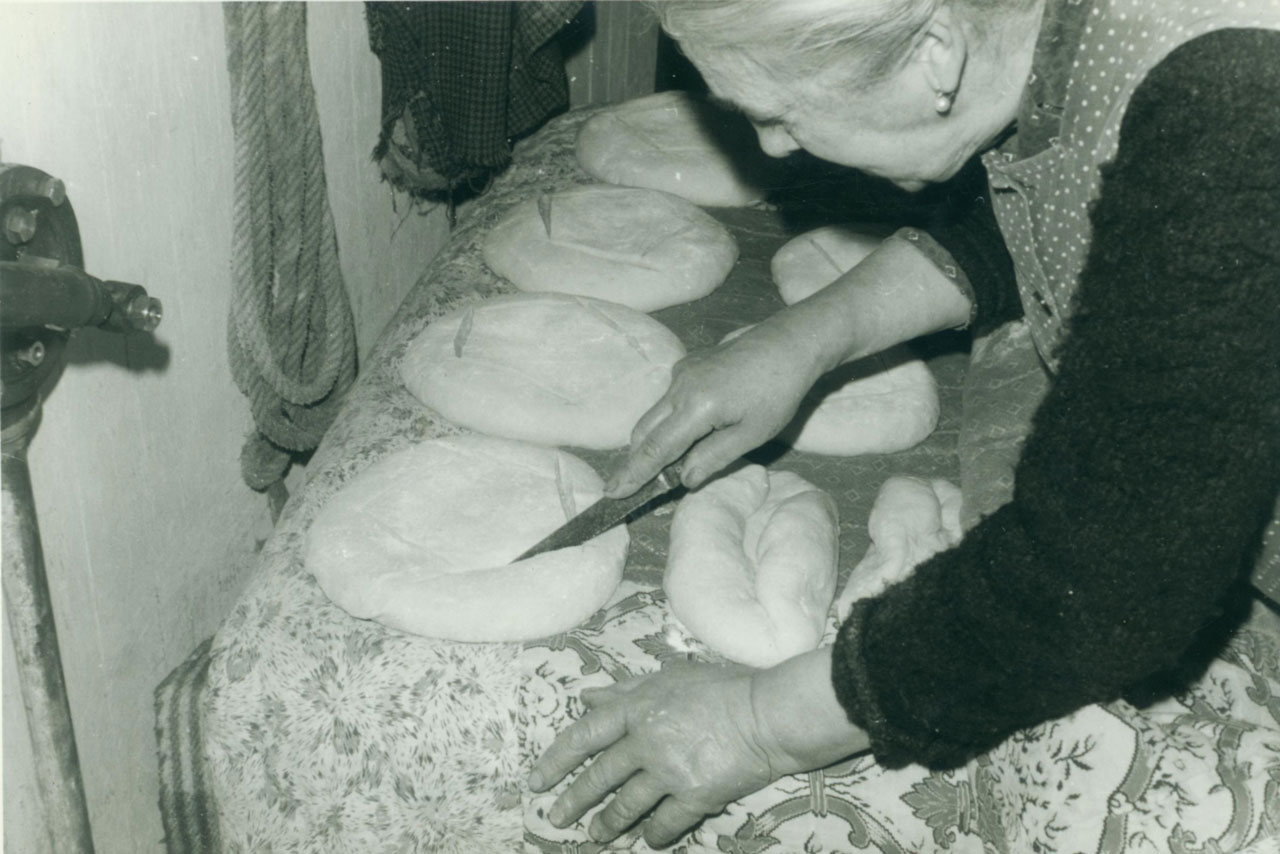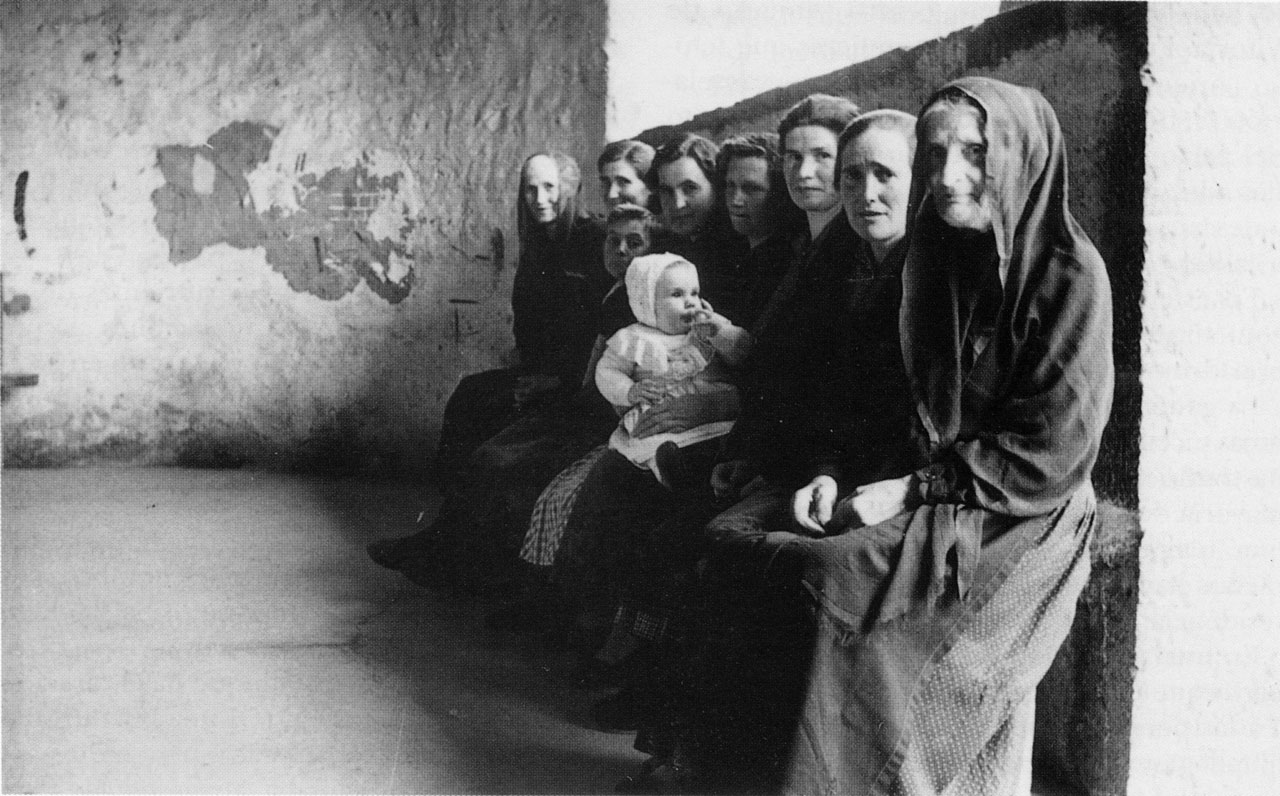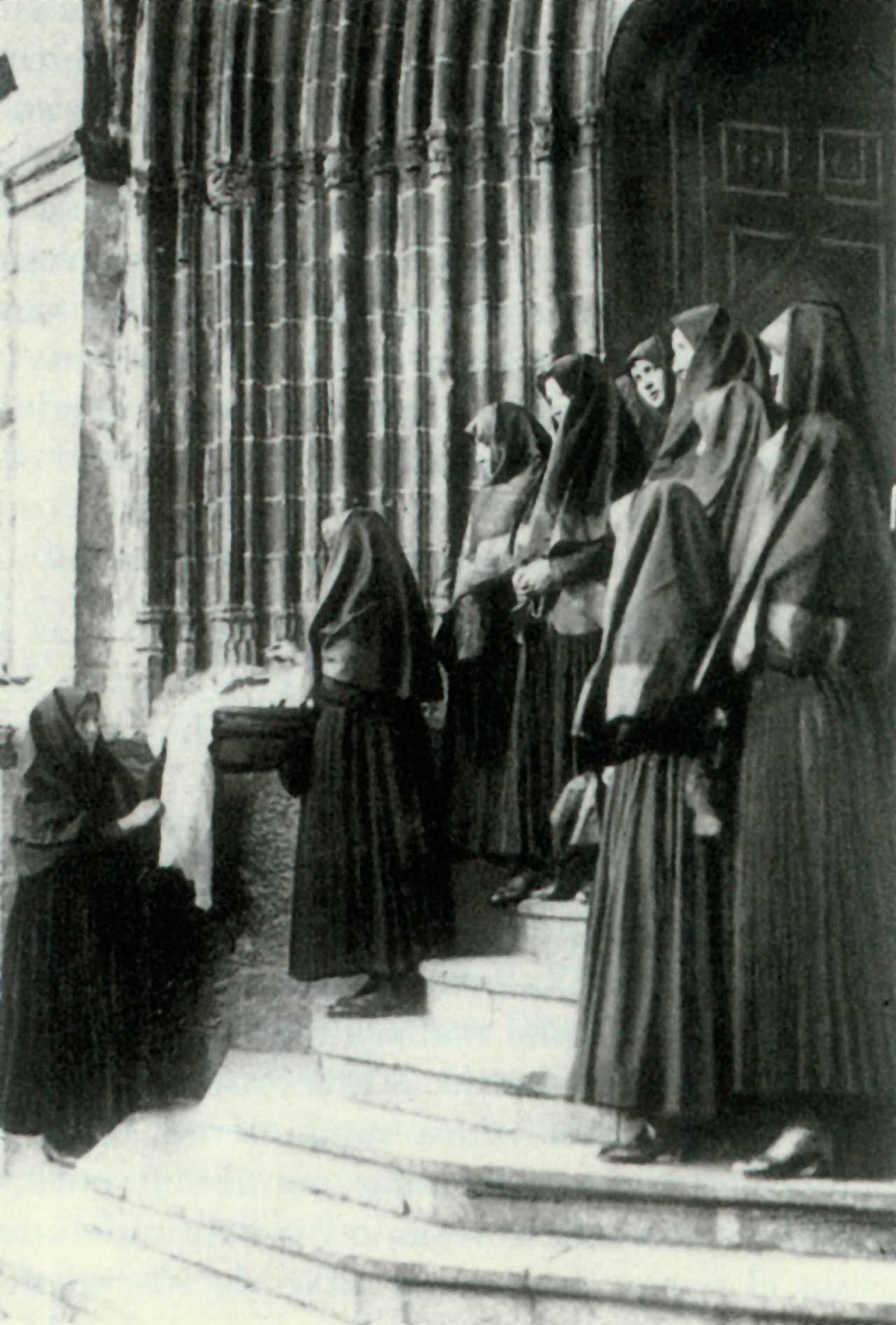Diferencia entre revisiones de «Main Page/en»
De Atlas Etnográfico de Vasconia
| Línea 186: | Línea 186: | ||
====[/atlas/ritos/Portadores-del-feretro-jasotzaileak-Amezketa.jpg|Coffin bearers. Amezketa (G). Source: Antxon Aguirre, Etniker Euskalerria Groups.|Death was an event that usually occurred in the neighbourhood, a fact that meant the home of the deceased played a leading role.|]==== | ====[/atlas/ritos/Portadores-del-feretro-jasotzaileak-Amezketa.jpg|Coffin bearers. Amezketa (G). Source: Antxon Aguirre, Etniker Euskalerria Groups.|Death was an event that usually occurred in the neighbourhood, a fact that meant the home of the deceased played a leading role.|]==== | ||
| − | ====[/atlas/ritos/Adornando-las-sepulturas-para-el-dia-de-Todos-los-Santos-Bilbao-1990.jpg|Caring for the graves on the occasion of All Saints’ Day. Bilbao (B), 1990. Source: Labayru Fundazioa Photograhic Archive: José Ignacio García Muñoz.|Omens of death included those associated with strange behaviour by some domestic animals, mainly dogs and cockerels.|| | + | ====[/atlas/ritos/Adornando-las-sepulturas-para-el-dia-de-Todos-los-Santos-Bilbao-1990.jpg|Caring for the graves on the occasion of All Saints’ Day. Bilbao (B), 1990. Source: Labayru Fundazioa Photograhic Archive: José Ignacio García Muñoz.|Omens of death included those associated with strange behaviour by some domestic animals, mainly dogs and cockerels.||]==== |
| − | ====[/atlas/ritos/Santa-Grazi.jpg|Santa-Grazi (Z). Source: Boissel, W. Le Pays Basque. Sites, Arts et Coutumes. Paris, A. Calavas edit.|Cuando el cárabo canta, la muerte levanta. <br />''When the tawny owl hoots, death wakes up.''|| | + | ====[/atlas/ritos/Santa-Grazi.jpg|Santa-Grazi (Z). Source: Boissel, W. Le Pays Basque. Sites, Arts et Coutumes. Paris, A. Calavas edit.|Cuando el cárabo canta, la muerte levanta. <br />''When the tawny owl hoots, death wakes up.''||]==== |
| − | ====[/atlas/ritos/Sepulturas-en-la-nave-de-la-iglesia-Amezketa-1990.jpg|Symbolic graves in church. Amezketa (G), 1990. Source: Antxon Aguirre, Etniker Euskalerria Groups.|Each homestead used to have a burial site inside the church’s nave. When burials were transferred to cemeteries, the once real burial site in church became a symbolic family grave, were offerings of light and bread were made to their dead.|| | + | ====[/atlas/ritos/Sepulturas-en-la-nave-de-la-iglesia-Amezketa-1990.jpg|Symbolic graves in church. Amezketa (G), 1990. Source: Antxon Aguirre, Etniker Euskalerria Groups.|Each homestead used to have a burial site inside the church’s nave. When burials were transferred to cemeteries, the once real burial site in church became a symbolic family grave, were offerings of light and bread were made to their dead.||]==== |
| − | ====[/atlas/ritos/Toque-de-campana-anunciando-la-muerte-Beasain.jpg|Death knell. Beasain (G). Source: José Zufiaurre, Etniker Euskalerria Groups.|Tolling the bell was a very effective way of announcing the death in rural settlements.|| | + | ====[/atlas/ritos/Toque-de-campana-anunciando-la-muerte-Beasain.jpg|Death knell. Beasain (G). Source: José Zufiaurre, Etniker Euskalerria Groups.|Tolling the bell was a very effective way of announcing the death in rural settlements.||]==== |
| − | ====[/atlas/ritos/Cortejo-funebre-1925.jpg|Funeral cortège, c. 1925. Source: Antxon Aguirre, Etniker Euskalerria Groups.|There were specific paths to carry the corpse from the house of the deceased to the church and the cemetery.|| | + | ====[/atlas/ritos/Cortejo-funebre-1925.jpg|Funeral cortège, c. 1925. Source: Antxon Aguirre, Etniker Euskalerria Groups.|There were specific paths to carry the corpse from the house of the deceased to the church and the cemetery.||]==== |
| − | ====[/atlas/ritos/Mujeres-con-ofrendas-Otxagabia-1920.jpg|Offering bearers. Otsagabia (N), c. 1920. Source: Fco. Javier Zubiaur and M.ª Amor Beguiristain’s private archive: Roldán and Calle Photographic Studios.|The members of the funeral cortege, relatives of the deceased and neighbours alike, would usually carry offerings of bread and light.|| | + | ====[/atlas/ritos/Mujeres-con-ofrendas-Otxagabia-1920.jpg|Offering bearers. Otsagabia (N), c. 1920. Source: Fco. Javier Zubiaur and M.ª Amor Beguiristain’s private archive: Roldán and Calle Photographic Studios.|The members of the funeral cortege, relatives of the deceased and neighbours alike, would usually carry offerings of bread and light.||]==== |
| − | ====[/atlas/ritos/Ofrenda-de-luces-Amezketa.jpg|Light offerings. Amezketa (G). Source: Garmendia Larrañaga, Juan. Neguko Festak. Donostia, 1993, J. Juanes Photographic Archive.|Light offerings would light up the way for the soul of the deceased. And bread would sustain it.|| | + | ====[/atlas/ritos/Ofrenda-de-luces-Amezketa.jpg|Light offerings. Amezketa (G). Source: Garmendia Larrañaga, Juan. Neguko Festak. Donostia, 1993, J. Juanes Photographic Archive.|Light offerings would light up the way for the soul of the deceased. And bread would sustain it.||]==== |
| − | ====[/atlas/ritos/Duelo-femenino-Sara.jpg|Mourners. Sara (L). Source: Veyrin, Philippe. Pays Basques de France et d’Espagne. Paris-Grenoble, 1951.|Sorrow was expressed by wearing mourning.|| | + | ====[/atlas/ritos/Duelo-femenino-Sara.jpg|Mourners. Sara (L). Source: Veyrin, Philippe. Pays Basques de France et d’Espagne. Paris-Grenoble, 1951.|Sorrow was expressed by wearing mourning.||]==== |
====[/atlas/ritos/Anuncio-de-la-muerte-a-las-abejas.jpg|Telling the bees. Source: ''Gure Herria''.|Erletxuak, erletxuak, <br />egizute argizaria, <br />nagusia hil da-ta, <br />behar da elizan argia. <br /><br /> | ====[/atlas/ritos/Anuncio-de-la-muerte-a-las-abejas.jpg|Telling the bees. Source: ''Gure Herria''.|Erletxuak, erletxuak, <br />egizute argizaria, <br />nagusia hil da-ta, <br />behar da elizan argia. <br /><br /> | ||
| − | ''Ritual formula to inform the bees of their keeper’s death''|| | + | ''Ritual formula to inform the bees of their keeper’s death''||]==== |
| − | ====[/atlas/ritos/Amortajamiento-de-un-nino-Durango.jpg|Infant shroud. Durango (B). Source: Gerediaga Association Archive: Germán Photographic Studio.|Jaiotzetik heriotza zor. <br />''When you begin to live, you being to die.''|| | + | ====[/atlas/ritos/Amortajamiento-de-un-nino-Durango.jpg|Infant shroud. Durango (B). Source: Gerediaga Association Archive: Germán Photographic Studio.|Jaiotzetik heriotza zor. <br />''When you begin to live, you being to die.''||]==== |
| − | ====[/atlas/ritos/Pipaon-1990.jpg|Pipaón (A), 1990. Source: Pilar Alonso, Etniker Euskalerria Groups.|Hildakoari hobia eta biziari ogia. <br />''The dead to the grave and the living to the roll.''|| | + | ====[/atlas/ritos/Pipaon-1990.jpg|Pipaón (A), 1990. Source: Pilar Alonso, Etniker Euskalerria Groups.|Hildakoari hobia eta biziari ogia. <br />''The dead to the grave and the living to the roll.''||]==== |
| − | ====[/atlas/ritos/Hilarriak-Irulegi.jpg|Funerary stelae. Irulegi (NB). Source: Michel Duvert, Etniker Euskalerria Groups.|Oilarrak gauez kukurruku jotzen badu, laster izango da gorpuren bat etxe hartan. <br />''A cockerel crowing at sunset, death is looming.''|| | + | ====[/atlas/ritos/Hilarriak-Irulegi.jpg|Funerary stelae. Irulegi (NB). Source: Michel Duvert, Etniker Euskalerria Groups.|Oilarrak gauez kukurruku jotzen badu, laster izango da gorpuren bat etxe hartan. <br />''A cockerel crowing at sunset, death is looming.''||]==== |
Revisión del 15:02 10 feb 2020
House and Family in the Basque Country


House and Family in the Basque Country
“It has quite rightly been said, therefore, that any human settlement is the amalgamation of a little humanity, a little land and a little water.”
J. M. Barandiaran
Family Diet in the Basque Country


Family Diet in the Basque Country
Donde no hay ni pan ni pollos, el horno no está para bollos. If there’s no bread or chicken, you shouldn’t bake rolls.
Children riding scooters and tricycles at Florida Park. Source: Municipal Archive of Vitoria-Gasteiz: Ceferino Yanguas.
Children’s Games in the Basque Country


Children’s Games in the Basque Country
Humans play games throughout their lives; however, that activity has a clearly different role for children and adults.
Traditional Medicine in the Basque Country


Traditional Medicine in the Basque Country
There is a hidden wisdom behind popular medicine that goes far beyond the remedy itself. This collection of data helps us catch a glimpse of a way to understand health and disease —and ultimately the human body— that differs from the prevailing view.
Rites from Birth to Marriage in the Basque Country


Rites from Birth to Marriage in the Basque Country
Ogiaren kurruskua mutikoa izan dadin. Eat up your crusts to have a boy.
Funeral Rites in the Basque Country


Funeral Rites in the Basque Country
The members of the funeral cortege, relatives of the deceased and neighbours alike, would usually carry offerings of bread and light.
Livestock Farming and Shepherding in the Basque Country


Livestock Farming and Shepherding in the Basque Country
At the end of the Middle Ages, flocks in the Basque valleys converged on the same mountains that are now the main summer grassland used for grazing.
Agriculture in the Basque Country


Agriculture in the Basque Country
Until the 1950s, flour mills were an essential aspect of the livestock-farming economy of our villages.








